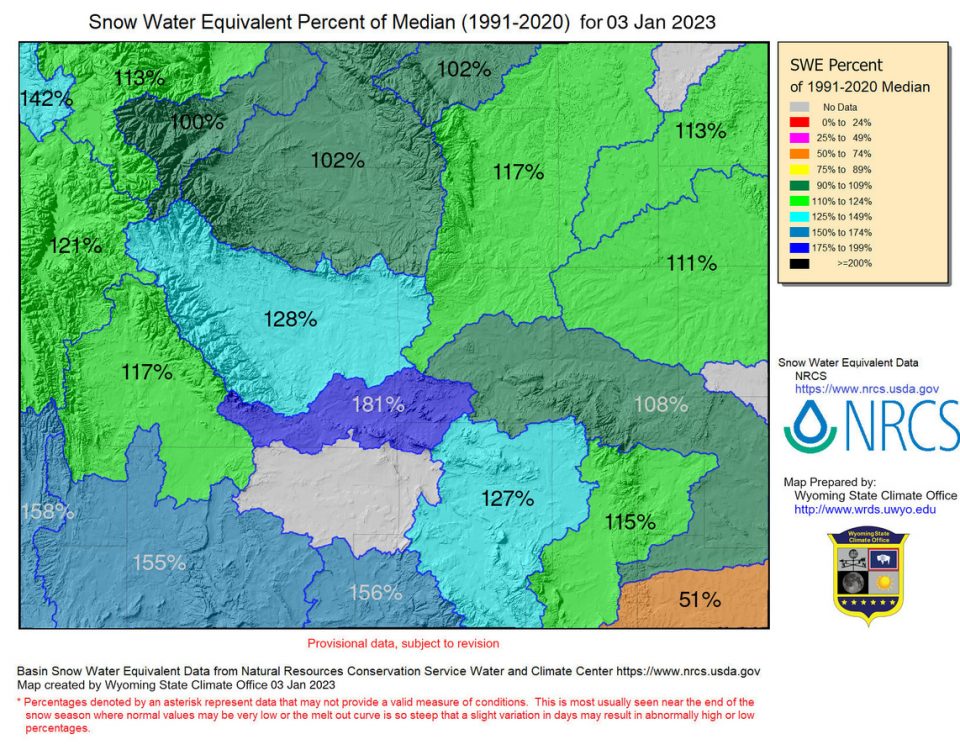Water measurement descriptions – Reel Deal Anglers
Wyoming Fly Fishing Guides
August 5, 20148.12.14
Water measurement descriptions
Here’s an attempt to define how we quantify water movement and storage when reading the various reports that are readily available online. Below are several links that Reel Deal Anglers uses on a daily basis to help determine the best options for any given day.
http://www.usbr.gov/pn/hydromet/burtea.html
http://waterwatch.usgs.gov/?m=real&r=wy&w=map
1.0 acre foot = 325,851 gallons
Water is commonly measured in acre-feet. One acre-foot of water can fill one acre of land, approximately the size of a football field, 1 foot deep. An acre-foot of water can supply the annual indoor and outdoor needs of one to two urban households. Palisades Reservoir can hold 1.2 million acre feet of water. That means when Palisades is full, at any one time, could supply roughly 2.4 million households for an entire year!
What does CFS mean?
Cubic Feet Per Second
1 cubic foot per second = 7.4805 gallons flowing by a particular point in 1 second
1 cubic foot per second (cfs)……….450 gallons of water per minute
One cubic foot is a box 12″ x 12″ x 12″ or roughly the size of a basketball
Evaporation:
Evaporation, the process by which a liquid or a solid changes into a vapor. A substance may evaporate in one of two ways: (1) by changing into a vapor at the surface, as when water evaporates from an uncovered dish; or (2) by boiling, that is, by changing to vapor both within the substance as well as at its surface. A solid can evaporate by melting into a liquid, which then evaporates; or by changing directly into a vapor, or subliming. The rate of evaporation of a substance depends on its surface temperature, the pressure, and the humidity.
Evaporation is caused by heat, the energy of molecules in motion. Molecules are motionless at absolute zero (-459.67 F. [-273.15 C.]). Above that temperature they are in constant motion, and the higher the temperature the faster they move. In moving, the molecules bump into each other. With each collision they transfer energy. If a surface molecule is bumped by two or three others in quick succession, it may gain enough energy to escape into the air, or evaporate. An evaporating molecule takes energy with it. Loss of this energy cools the substance from which it escapes.
Evaporation of perspiration cools our bodies. Evaporation of water from the earth keeps the air moist and provides the moisture for clouds. Thus evaporation has an important influence on weather and climate. It is important also in air conditioning, refrigeration, and distilling. Substances are evaporated in a partial vacuum to speed evaporation or to prevent deterioration by heat. Instant coffee and frozen orange juice are evaporated in this way, and so are blood plasma, vaccines, and antibiotics such as penicillin. Camphor is purified by sublimation.
Hopefully, that better helps explain the water flows and storage measurements. We’re so fortunate to have water and pray the trend continues!!!



